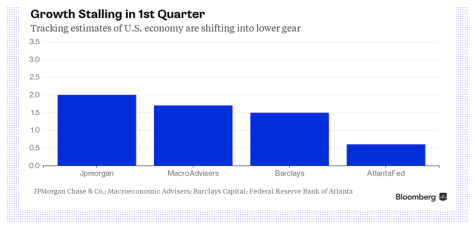-- Published: Monday, 16 March 2015 | Print | Disqus
By Gary Tanashian
As the title suggests I want to talk more and chart a little less this week. We do so much charting and parameter management that I think we are in no danger of falling behind the curve in those areas. The same goes for the indicators and sentiment tools we use. It is all still there, available and ready for use at the drop of a hat.
As for economic data and projections, that too has been an area that in my opinion we have been on top of. Going back to the early 2013 Semiconductor ramp up right on through late 2014’s projections for European exporters due to currency dynamics, we have been on the job and things have been generally according to plans.
For now I want to have a talk about policy and the economy because there are different scenarios in play even as the vast majority speak in terms of when, not if the Fed is going to raise interest rates. Everybody is on one side of the boat and nobody is more bloated and weighing that side to the tipping point than dear old Uncle Buck.
[edit] We were not afraid to call the dollar bullish last summer, so we will not be afraid to note its bad risk vs. reward proposition now
A coming Fed rate hike seems to be the play with the highest probability but there is no real outward reason for them to raise interest rates other than because the bond market is telling them to. The chronically strong US dollar is telling them not to, it’s not needed. After all, raising short-term interest rates is primarily a tool for defending a weak currency that is prone to inflict inflationary effects upon the economy.
What the US is currently experiencing is a relatively strong economy that is feeling the first waves of pressure due to the strong USD. From Bloomberg: Surprise: U.S. Economic Data Have Been the World’s Most Disappointing. Some excerpts…
The Bloomberg ECO U.S. Surprise Index, which measures whether data beat or miss forecasts, fell to the lowest since 2009, when the nation was in the deepest recession since the Great Depression.

This month alone, personal income and spending, manufacturing as measured by the Institute for Supply Management, auto sales, factory orders, and retail sales have all come in a bit weak.
Citigroup keeps economic surprise indexes for the world, and its scoreboard shows the U.S. is most disappointing relative to consensus forecasts, with Latin America and Canada next, as of March 12. Emerging markets were supposed to be hurt by falling oil prices but are now delivering positive surprises. U.S. policymakers frequently talk about weakness in Europe and China, though both are exceeding expectations.

First-quarter U.S. growth forecasts continue to be cut, and like last year, weather is getting a share of the blame.
JPMorgan Chase’s Michael Feroli cut his forecast to 2 percent from 2.5 percent on March 6. Barclays Capital has reduced its estimate to 1.5 percent as of March 12. Macroeconomic Advisers’ tracking forecast was lowered to 1.7 percent on March 12.

The data further our current theme of a more globally oriented view vs. the US, as the news falls right in line with the operating plan that sees a strong US dollar wearing away at exporters and manufacturers in the US. Insofar as the USD has driven down all commodities, it is supporting the US consumer as some energy costs declined (though notably, electric bills and other service charges within the economy are rising).
People are starting to catch on to the idea that a rising currency will pressure the economy and that the days of ‘King Dollar’ (circa 1990’s), when manufacturing was sacrificed in favor of the ‘consumer economy’ may be gone. We reiterate that it was manufacturing (led by its most economically sensitive sub-sector, Semiconductor Equipment) that led the current cycle and it is manufacturing that is now easing with the rise of the USD.
The consumer, with all those strong dollars in his pocket, is not feeling great. Here is the lead to the article linked above…
It’s not only the just-released University of Michigan consumer confidence report and February retail sales on Thursday that surprised economists and investors with another dose of underwhelming news. Overall, U.S. economic data have been falling short of prognosticators’ expectations by the most in six years.
Considerations include the weather and the West Coast port shutdowns, but the biggest consideration is as we’ve anticipated, that a strongly rising currency – in the face of a US Fed widely expected to soon raise interest rates – would put a drag on forward expectations. Sure enough there are revisions to GDP by financial entities and even at least one Fed branch. As noted in an update last week, Intel is just the latest high profile company to confirm this condition.
Here we note that the USD index hit 100.38 on Friday before settling at 99.41. Our big picture theme is for a resumed economic deceleration but these Aircraft Carriers take time to turn around. The FOMC meets [this] week and these thugs still have the rapt attention of a world full of well trained (i.e. subservient) traders and investors.
They may continue to act tough at this meeting, but acting tough supports the US dollar and if the US dollar is a big reason that the economy is flagging and if the economy continues to sag, one of these FOMC meetings could well contain some language designed to pop Uncle Buck right in the kisser.
NFTRH.com and Biiwii.com
| Digg This Article
-- Published: Monday, 16 March 2015 | E-Mail | Print | Source: GoldSeek.com

